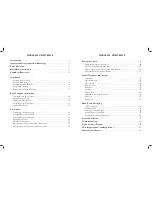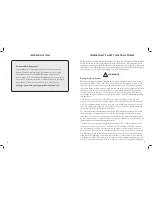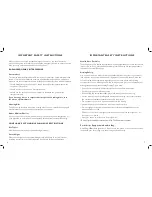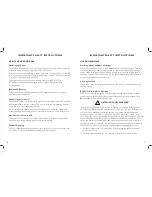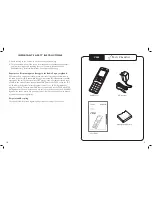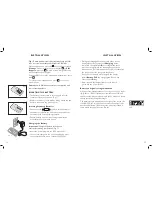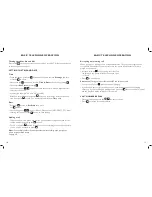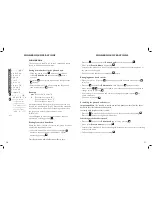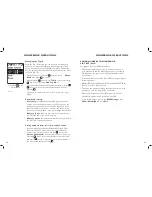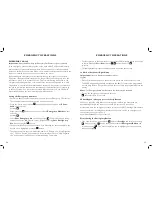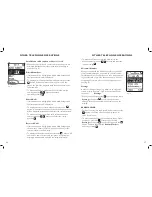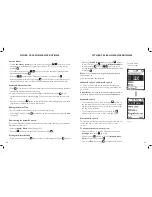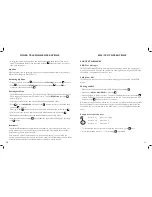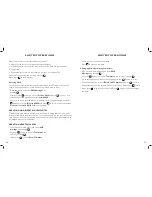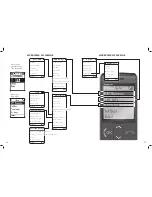
6
7
After you have re-entered your five emergency numbers, you should test the
phone’s emergency call feature by pressing the emergency button to ensure that you
have correctly entered the numbers into the phone.
RADIO FREQUENCY INTERFERENCE
Pacemakers
The Health Industry Manufacturers Association recommends that a minimum sepa-
ration of 6 inches be maintained between a handheld wireless phone and a pace-
maker to avoid potential interference with the pacemaker. Persons with pacemakers:
• Should always keep the phone more than 6 inches from their pacemaker when
the phone is turned on;
• Should not carry the phone in a breast pocket;
• Should use the ear opposite the pacemaker to minimize the potential for
interference; and
If you have any reason to suspect that interference is taking place, turn
the phone off immediately.
Hearing Aids
The phone may interfere with some hearing aids. If it does, consult the hearing aid
manufacturer or your physician for alternatives or remedies.
Other Medical Devices
If you use any other personal medical device, consult the device manufacturer or
your physician to determine if it is adequately shielded from external RF energy.
COMPLIANCE WITH MOBILE PHONE USE RESTRICTIONS
Air Travel
Mobile phone use may be prohibited during air travel.
Posted Signs
Obey posted signs or notices prohibiting mobile phone use in certain locations,
including but not limited to blasting areas, health care facilities and aircraft.
Health Care Facilities
Turn the phone off in health care facilities when any regulations posted in these areas
instruct you to do so. Hospitals and health care facilities may use equipment that is
sensitive to external RF energy.
Driving Safely
Use of a mobile phone with or without a headset while driving cars or other motor-
ized vehicles is not recommended and is against the law in some areas. Check and
follow local laws and regulations regarding use of a mobile phone while driving.
If you decide to use a mobile phone while driving a vehicle, give your full attention to
driving safely and keep the following Driving Tips in mind
*
:
• Get to know your phone and its features such as speed dial and redial.
• Position your phone within easy reach.
• Dial sensibly and assess the traffic; place calls when you are not moving.
• Let the person you are speaking with know you are driving; if necessary suspend
the call in heavy traffic or hazardous weather conditions.
• Do not take notes or look up phone numbers while driving.
• Use a headphones or headsets for convenience and comfort.
• Do not engage in stressful or emotional conversations that might divert your
attention from the road.
• Dial 911 or other local emergency numbers to report serious emergencies – it’s
free from your phone
• Use your phone to help others in emergencies.
*
Driving Tips used with permission from CTIA-The Wireless Association
®
For Vehicles Equipped with an Air Bag
An air bag inflates with great force. Do not store the phone or any of its accessories
in the area over the air bag or in the air bag deployment area.
IMPORTANT SAFETY INSTRUCTIONS
IMPORTANT SAFETY INSTRUCTIONS


